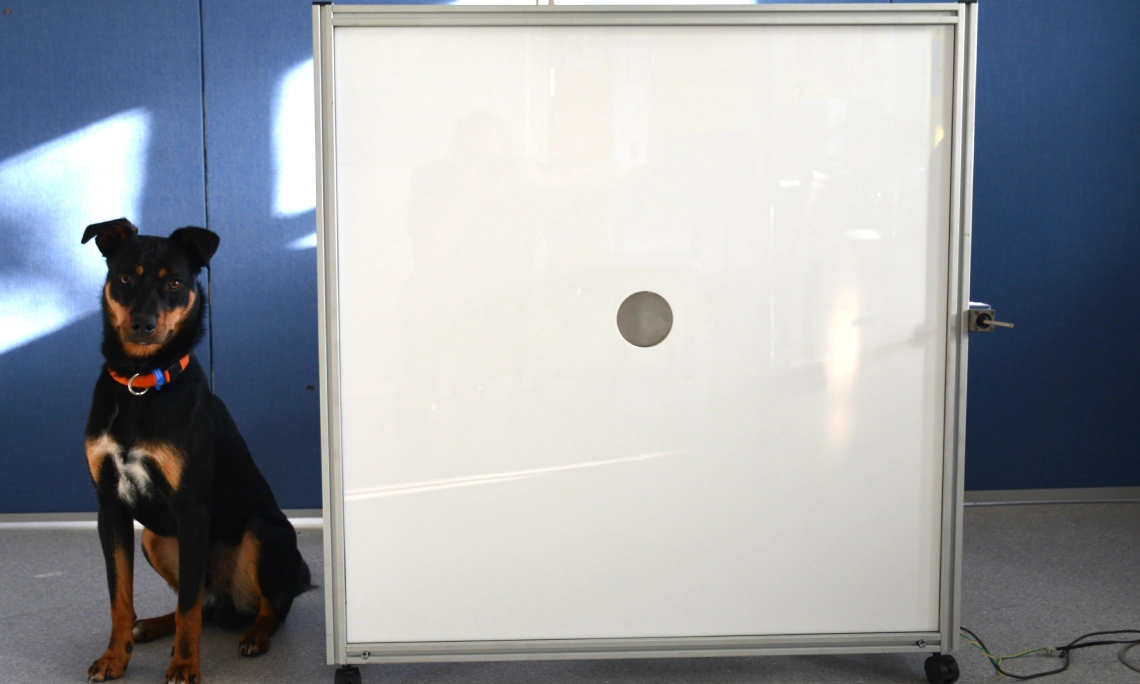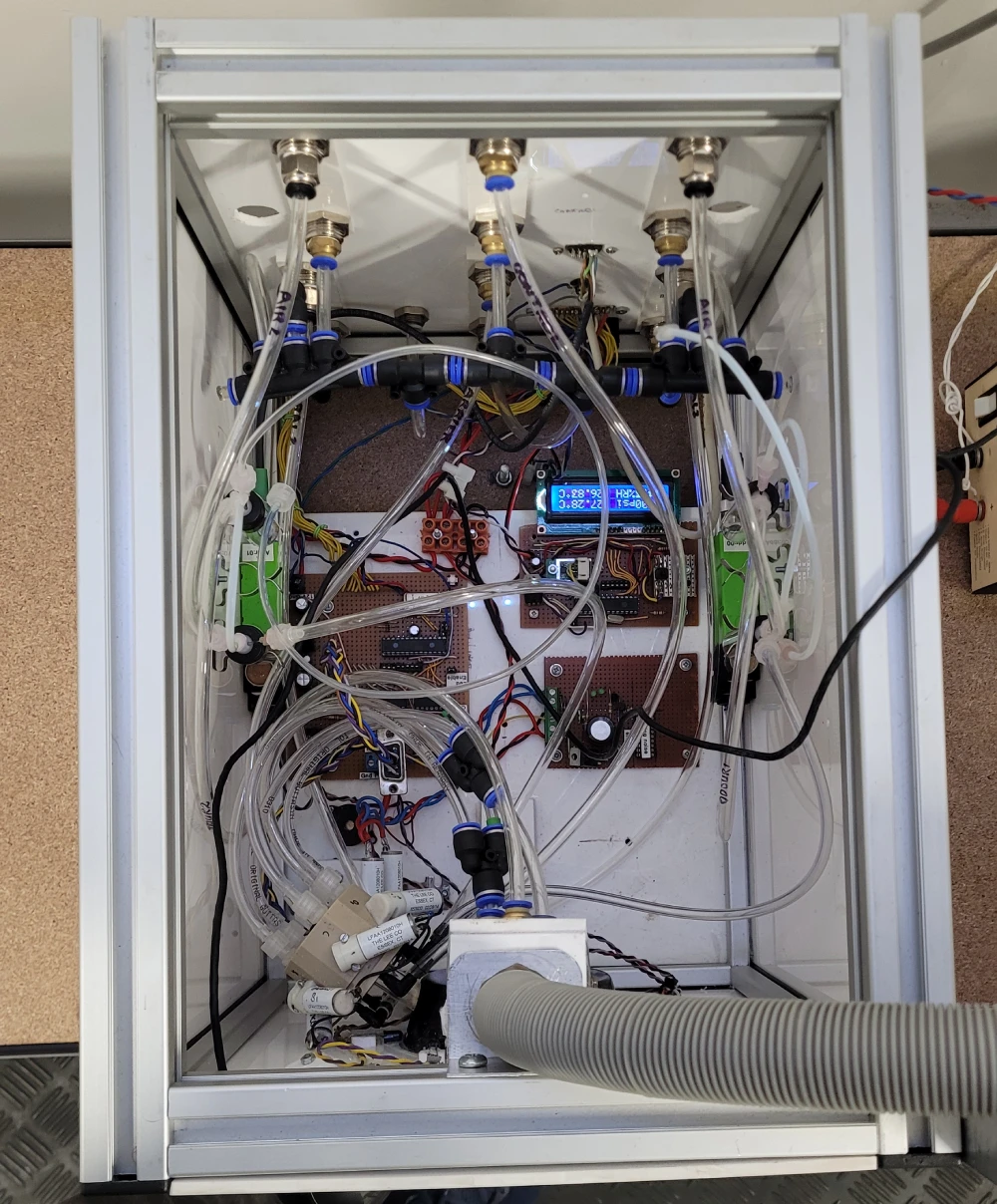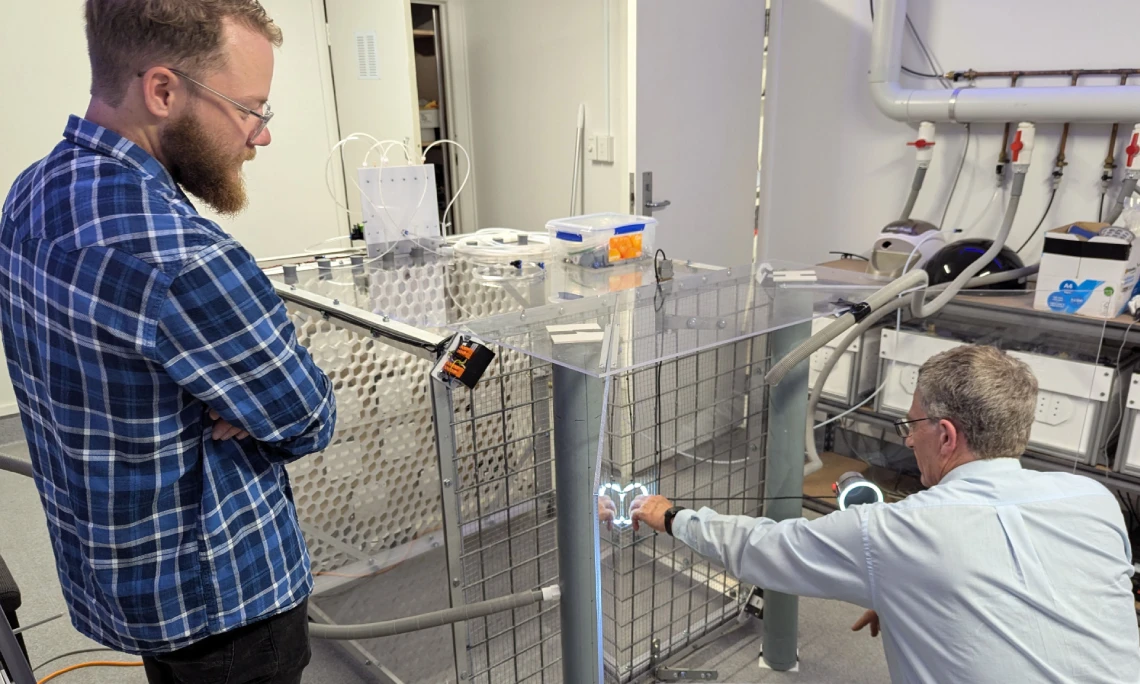Technology
We develop tech to train dogs to work independently and avoid unintentional human cues, supporting more reliable research and detection outcomes.

With the support of our talented technician, Rob Bakker, we develop a variety of technology for applied and basic research with dogs. In general, we aim to train dogs to work independently, and we have invented and adapted several devices for this purpose.
One of the key reasons for doing this is that it is very difficult to avoid “cuing” dogs – that is, letting them know which samples are positive and negative – even when the handler makes a conscious effort to avoid doing so.
Dogs are highly attuned to social cues from humans. Read more in 'Handler beliefs affect scent detection dog outcomes'.
Read the story of Clever Hans, a related and entertaining example.
Carousel
The automated carousel apparatus was developed by our research group to facilitate applied scent-detection research and operational scent-detection work. The apparatus can be used with nearly any sample that can be brought into the laboratory.
For example, in our lung cancer research, breath and saliva samples collected from the hospital are used, and in our fish-detection research, water samples from aquaria or field sites are used. A complete description of the apparatus has been published in “Automated Canine Scent-Detection Apparatus: Technical Description and Training Outcomes” to allow others to duplicate and adapt this design.

Airflow olfactometers
For some of our basic research projects, we use six-channel airflow olfactometers (presenting up to six different odours into an airstream), based on the design described in “An Automated Canine Line-Up for Detection Dog Research” by Aviles-Rosa et al. These are adapted according to the specific research project.
For example, we can add a lever to allow dogs to reject a sample (tell us it is negative) for projects in which this would be useful, or we can use multiple boxes to train dogs to select an odour from several options.
For our timing research, we use an airflow olfactometer based on the “fast olfactory stimulator” developed by Raiser et al. in “A High-Bandwidth Dual-Channel Olfactory Stimulator for Studying Temporal Sensitivity of Olfactory Processing.” This device can present odours with precision down to a few milliseconds, making it especially useful for studying dogs’ perception of odour arrival timing.

Wind tunnel
We have developed a “wind tunnel” that can be used to present naturalistic odours to dogs in an air plume. Odours are released from one end of the wind tunnel and travel through the tunnel to the dog’s nose. Dogs learn to hold their nose at a cross-section of two infrared beams so that we can be sure that they are sampling the odour plume in exactly the right spot.
The wind tunnel is being used to study dogs’ ability to discriminate between odours released from the same and separate places, but it can be used to address a wide range of research questions involving naturalistic odour plumes.
